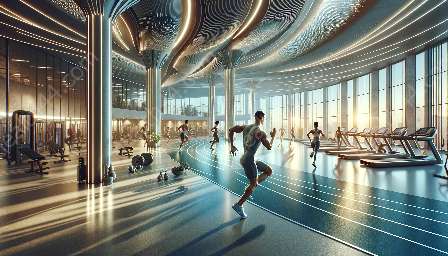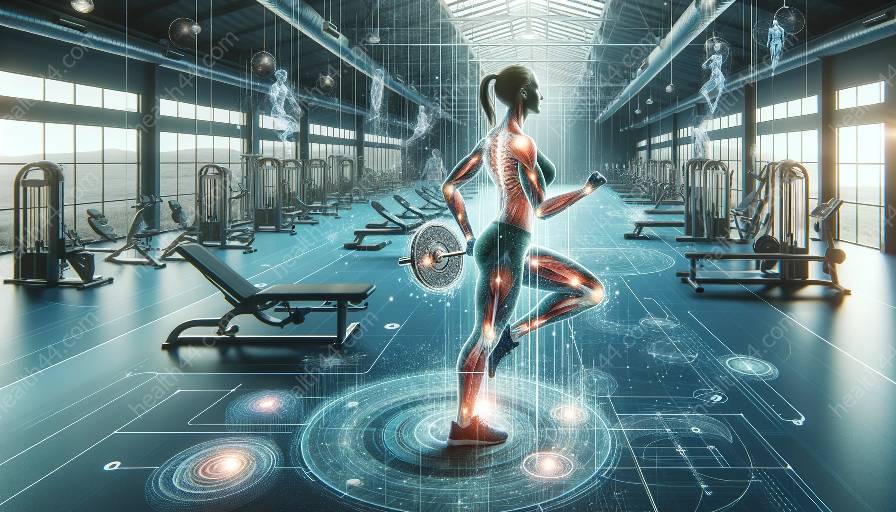Biomechanics in fitness is a captivating field that explores the mechanics of the human body in motion and exercise. It plays a crucial role in enhancing health-related fitness by optimizing movement patterns, preventing injuries, and maximizing workout effectiveness. By delving into biomechanics, individuals can gain a deeper understanding of how their bodies function during physical activities, thereby improving overall health and wellness.
The Basics of Biomechanics
Biomechanics is the study of the mechanics and physics of the human body, particularly how it moves, functions, and interacts with external forces during physical activities. In the context of fitness, biomechanics focuses on analyzing movements such as walking, running, lifting weights, and performing various exercises to understand the underlying principles of motion and muscle activation.
Biomechanical analysis allows fitness enthusiasts to break down complex movements into their individual components, such as joint angles, muscle activations, and force distribution. By examining these elements, individuals can optimize their exercise techniques, pinpoint areas of potential improvement, and reduce the risk of injury.
Implications for Health-Related Fitness
The application of biomechanics in fitness has significant implications for health-related fitness. By understanding the biomechanics of different exercises and movements, individuals can tailor their workouts to enhance strength, flexibility, endurance, and overall physical performance. For example, by optimizing the biomechanics of a squat or a deadlift, individuals can maximize muscle activation and minimize stress on the joints, leading to improved functional fitness and reduced risk of injury.
Furthermore, biomechanical analysis can help individuals identify and correct movement imbalances or asymmetries that may contribute to chronic pain or musculoskeletal issues. By addressing these issues through targeted exercises and movement modifications, individuals can improve their overall health and physical well-being.
Optimizing Workout Effectiveness
Understanding biomechanics empowers individuals to optimize the effectiveness of their workouts. By refining movement patterns and exercise techniques based on biomechanical principles, individuals can achieve better results in terms of muscle development, fat loss, and overall fitness improvement. For instance, by adjusting the grip width and hand placement during resistance training exercises, individuals can target specific muscles more effectively, leading to greater strength gains and muscle development.
Moreover, biomechanical analysis can help individuals customize their training programs to their specific body mechanics, strengths, and weaknesses, leading to more tailored and efficient workouts. This personalized approach to fitness not only improves physical performance but also promotes long-term health and sustainability in an exercise regimen.
Biomechanics and Injury Prevention
One of the most significant benefits of incorporating biomechanics into fitness is injury prevention. By identifying movement patterns and exercise techniques that place excessive stress on the body, individuals can mitigate the risk of sports-related injuries and overuse ailments. Biomechanical assessments can reveal potential risk factors for injuries, such as improper form during weightlifting, running gait abnormalities, or inadequate force distribution during dynamic movements.
Through biomechanical interventions, individuals can implement corrective strategies to address these risk factors, such as form adjustments, targeted strengthening exercises, and movement pattern modifications. These proactive measures not only reduce the likelihood of acute injuries but also contribute to long-term joint health and physical resilience.
Biomechanics: A Holistic Approach to Health
Biomechanics in fitness aligns with the principles of holistic health by emphasizing the interconnectedness of body mechanics, physical activity, and overall well-being. By integrating biomechanical analysis into fitness routines, individuals can nurture a comprehensive approach to health that encompasses injury prevention, performance optimization, and sustainable exercise practices.
This holistic perspective encourages individuals to consider not only the immediate benefits of exercise but also the long-term impact on their musculoskeletal health and functional capacity. By embracing biomechanics as a guide for fitness and physical activity, individuals can cultivate a mindset that prioritizes the preservation of joint function, the prevention of movement-related injuries, and the promotion of overall physical resilience.
Conclusion
Biomechanics in fitness offers a wealth of opportunities to enhance health-related fitness through a deeper understanding of human movement and exercise mechanics. By leveraging biomechanical principles, individuals can optimize workout effectiveness, prevent injuries, and foster a holistic approach to health. This integration of biomechanics and fitness not only improves physical performance but also contributes to long-term health and well-being, making it an essential consideration for individuals seeking to maximize the benefits of exercise and movement.





















